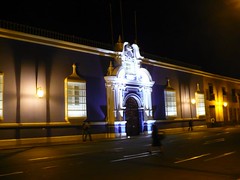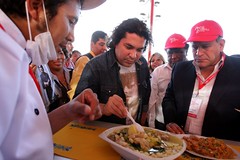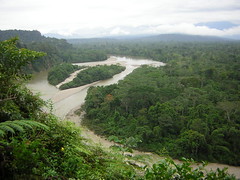Gastronomy is the new driving force for economic development
With the growing economic benefits Peru is enjoying thanks to its cuisine, as demonstrated by a second very successful gastronomic fair hosted in the capital of Lima not long ago, it is little surprise that a recent study by Arellano Marketing has produced figures that back up what is plain to see.
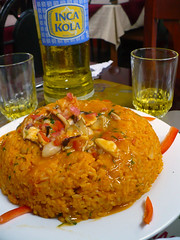
Arroz de Mariscos
According to the study conducted for Peru’s gastronomic society APEGA, the industry will generate S/.40 billion or $14 billion in 2009 – effectively 11.2% of the country’s projected GDP for the year and double that of 2008.
Presented in the MISTURA 2009 fair, the study showed that Peruvian food will rival mining as a driver for economic development in the coming years, and over take many other industries. It also served to remind us of all the other sectors directly and indirectly related to the restaurant industry that will benefit from its growth – from farming, to tourism, to cargo companies and even to producers of wood and metal items for tables and cutlery.
But, even if we don’t take these additional sectors into account, restaurants alone, via the sale of food and nothing else, in 2009 will have generated S/.12 billion or $4 billion – 4.2% of the nation’s GDP.
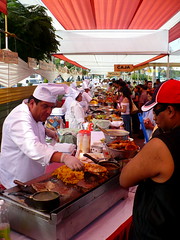
One of many food fairs
The study also found a significant increase in Gastro-Tourism to Peru, with a rise of 5% of visits to Peru with its cuisine as the sole or primary reason for the trip.
This is in a large part foreign tourists with high incomes, but also a very large number, as high as 100,000 people, who cross into Peru by land from Ecuador and Chile just so they can get something good to eat. $120,000,000 entered the country this way in 2008 and is expected to be much higher in 2009.
Rural communities and farmers are also benefiting. Demand for meats, fruits, potatoes and spices is growing exponentially, raising incomes in rural Peru and allowing farmers to implement new techniques and achieve higher production and greater economies of scale that allow them to keep low prices while producing even more.
Chef schools are opening up across the country, providing new opportunities for 6,000 students now studying haute cuisine but with Peruvian ingredients.
Here’s looking forward to what 2010 will bring.
Tags: chile, economy, ecuador, food, gastro-tourism, lima, mistura, restaurant



